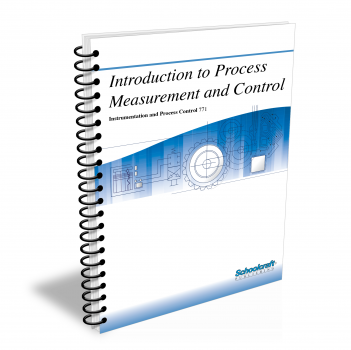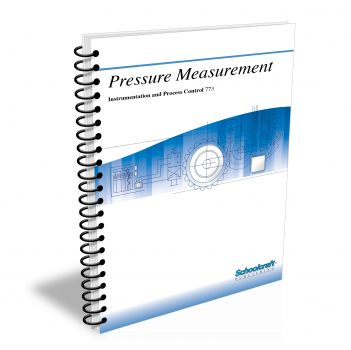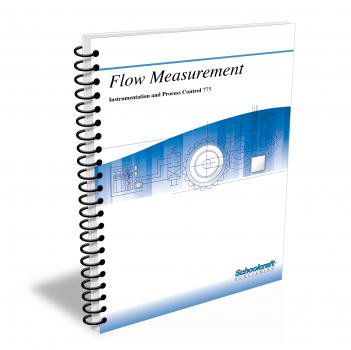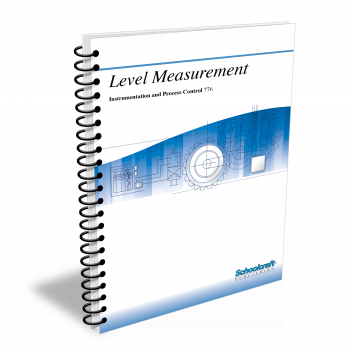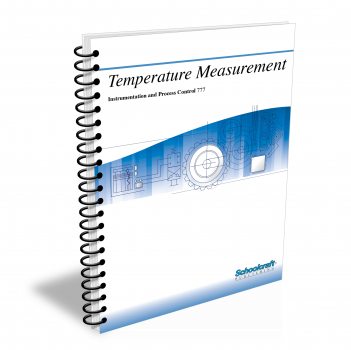Force, Weight, and Motion Measurement
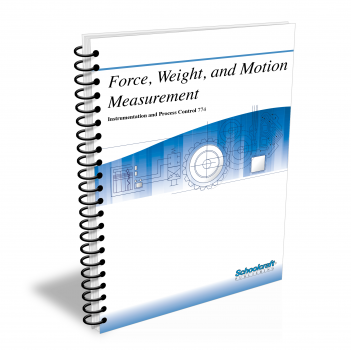
Course Number: 774
The Force, Weight, and Motion Measurement textbook defines force, stress, and strain and explains the operation of strain-gauge systems. It relates weight to mass and scales to balances. It also explains the operation of load-cell scales, belt scales, nuclear scales, and weigh feeders. It covers position measurements by means of proximity detection, air gauging, LVDT gauges, synchros, code disks, and other devices. It explains machine tool control and accelerometer operation and describes the measurement of angular velocity and acceleration, vibration detection, and machinery balancing.
Does your curriculum require additional topics not included in this textbook? Build a customized version of the Force, Weight, and Motion Measurement textbook below.
This textbook has been recently updated
to include topics lists, objectives, & key terms for every chapter.
Recommended Contact Hours – 8
Preview a Chapter
Available Supporting Material
- Table of Contents
- Exam Copies
- Suggested Titles
Table of Contents
Chapter 1: Force, Stress, and Strain
Topics: Units of force; Static forces; Elasticity; Strain gauges; Gauge factor; Gauge configurations; Other force-measuring devices
Learning Objectives:
- Define force, stress, strain, and deformation in terms of the English and SI units used for their measurement.
- Describe the relationship between stress and strain (Hooke's law).
- Describe the operation and construction of various kinds of strain gauges.
- Identify the electrical circuits used with strain gauges.
- Describe the piezoelectric effect and the capacitance mat and discuss typical applications.
Chapter 2: Weight and Mass Measurement
Topics: Weight vs. mass; Acceleration; Spring scales; Balances; Load cell scales; Hydraulic, LVDT, and pneumatic load cells; Batch scales
Learning Objectives:
- Define and compare weight and mass, including SI and English units.
- Explain the relationship between a mass and the acceleration of that mass.
- Discuss Newton's first law of motion.
- Describe spring scales, equal-arm balances, and unequal-arm balances.
- Discuss the operating principles governing load cells.
- Describe the operation and application of industrial batch scales.
Chapter 3: Weighing Materials in Motion
Topics: In-transit weights; Belt-scale systems; Roller scales; Nuclear scale operation; Radiation detectors; Weigh feeders
Learning Objectives:
- Name the parts of a belt scale and explain how a typical belt scale operates.
- Discuss the use of roller scales.
- Describe the scale comparison, calibration chain, and electronic integrator methods of calibrating in-transit scales.
- Explain how radiation detectors work and describe the operation of a nuclear scale.
- Describe how continuous weigh feeders operate and discuss typical applications.
Chapter 4: Position Measurements
Topics: Micrometers; Dial indicators; Potentiometers; Tracer systems; Variable-reluctance transducer; Proximity detection; Air gauging; Moving-coil transducer; LVDT gauge; Inspection gauging
Learning Objectives:
- Describe how micrometers and dial indicators are used to gauge an object and to make a position measurement.
- Explain how precision potentiometers, tracer systems, variable-reluctance transducers, and proximity detectors measure linear position.
- Describe how air gauging is used to measure inside and outside diameters.
- Discuss the operation and uses of LVDT gauge heads.
- Explain how typical rotary potentiometers, synchros, and code disks converters operate.
- Discuss applications for extensometers and full-field devices.
Chapter 5: Acceleration, Vibration, and Shock
Topics: Speed vs. velocity; Radar devices; Machine tool control; Linear and angular acceleration; Accelerometers; Vibration; Balancing machinery
Learning Objectives:
- Compare speed and velocity and calculate speed from distance and time.
- Explain how the accelerometer works.
- Contrast direct and indirect speed measurement and give examples of each.
- Discuss the operation of LVDT, potentiometric, and piezoelectric accelerometers.
- Describe the undesirable effects of vibration and discuss ways of preventing them.
Request Exam Copies
Exam Copies
Ready to see a copy of our textbooks? After selecting which textbooks you’d like to review for your course, you can submit your request by either logging in or creating an account so we know where to ship your exam copies. A representative from Schoolcraft will contact you to confirm and finish processing your request.
Exam copies are always free and yours to keep.
Selected Exam Copies
none selected
* Maximum of five copies can be ordered
